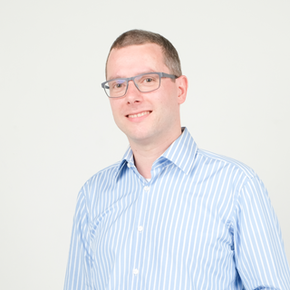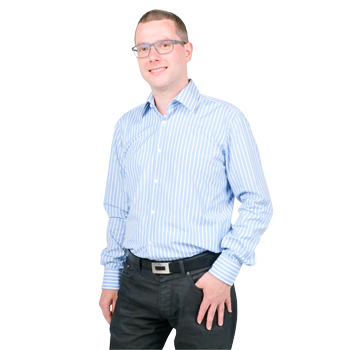Transportation company Heisterkamp from Oldenzaal in the Netherlands is the European market leader in so-called ‘trailer trucking’: the customer is responsible for the flow of goods and loading of its semi-trailers; Heisterkamp provides the 'wheels': the truck and the driver. This business model has proved so successful that Heisterkamp now offers its services from a variety of different European locations. Until recently, each location did its own planning and there was no common database. So CQM helped Heisterkamp develop a single overall planning system. With extras.
The success of trailer trucking actually makes perfect sense. Customers don’t have to invest in trucks or drivers, and can instead concentrate fully on their core business. Heisterkamp ensures that every day, and at all their European locations, there is always a truck, driver and, where necessary, semi-trailer available. As more and more customers have discovered the advantages of this service, Heisterkamp has opened one location after another across Europe. Aside from its headquarters in Oldenzaal, the company now has offices in Ghent (Belgium), Trier and Travemünde (Germany), Szczecin (Poland), Košice (Slovakia) and Riga (Latvia).
Alignment
In the past, independent working planning groups in each of Heisterkamp’s European locations made their own daily planning for transport and personnel. "Though things sometimes went wrong, such as double-booking of trucks or drivers, the planning actually functioned pretty well," says Heisterkamp Operations Manager Devlin Scholten. "But with the rapid expansion of our business it soon became clear that these local, stand-alone operations were no longer viable. To increase efficiency, reduce errors and get a better overview, we wanted to ensure uniformity through one overall planning system. We spent the a whole year on the preparations, with logistics consultancy Cape Group mapping all our requirements. Together we concluded that such complex planning could best be done through a customized system. After which, it didn’t take long to decide on CQM."
ROTA
"Heisterkamp has got things sorted," says CQM consultant Geert Teeuwen. "Every day the company uses 750 trucks to transport the semi-trailers of numerous customers throughout Europe. By linking up multiple European locations or switching trailers and drivers, a truck can remain in use day and night. By adopting this smart approach, the company is doing an excellent job of meeting market demand. Our challenge was to streamline the many transportation trips and the deployment of drivers into one system."
The CQM team developed an application that Heisterkamp christened ROTA, the Latin word for ‘wheel’. "ROTA had to incorporate the various different planning methods in European offices into one new uniform method and system," explains Teeuwen. "Previously planning had been done in Excel, with each office having its own way of doing things. So we first developed a new integrated input module for assignments and a digital planning list. This meant everyone could now enter customer orders in the same way and there was a single planning list showing the entire schedule. A major advantage of this comprehensive overview is that different planning groups can exchange available trucks and assignments."
Familiar
Following user training, ROTA went live in early June 2012. It was soon clear that planning could be done in less time and that it was easier for planners to temporarily take on the work from another planning group. "Actually it went really smoothly," says Heisterkamp’s Devlin Scholten. "Mainly because in the first phase of application we imitated existing practices. CQM had more or less reconstructed in ROTA the Excel overview with which our planners had previously worked. This meant the planners still had the old familiar interface. We took a highly phased approach to the subsequent steps, with each new step bringing another visible and recognizable result for our planners. That's been very important for the acceptance of the system," argues Scholten.
Extras
After the successful first phase, CQM immediately added new functionalities to the system. First, communication with the onboard computers of the trucks was integrated into ROTA, so planners and drivers can send each other messages. Planners can now also see on a plan.cqm (based on OpenStreetMap) the truck’s location and current activity. In addition, automatic controls have been introduced. This makes it immediately clear whether a particular combination of truck, driver and assignment is possible, taking into account for example ADR requirements and customer wishes.
CQM’s Teeuwen: "In other words, we took the optimization step by step. In the meantime, driver deployment has been incorporated into ROTA, including drivers’ work cycles, holidays and sick leave. This allows year-round for any potential capacity problems to be spotted in time and avoided. ROTA also automatically checks that a driver hasn’t accidentally been deployed at a time when he isn’t available. In December we added a Gantt chart to ROTA. This shows very clearly which trucks are working on which assignments when, and which ones have no job. This makes it even easier for planners to find available trucks. And finally, we have added a reporting module to ROTA, incorporating all the planning groups, with which Heisterkamp can develop its own reports."
Never heard no
Geert Teeuwen sees the development of ROTA as a textbook example of how CQM likes to collaborate with its customers. "Genuine co-creation, where we make maximum use of each other's expertise to achieve the optimum result." Devlin Scholten agrees. "The cooperation has been extremely straightforward and friendly. What’s more, the CQM approach fits perfectly with the no-nonsense mentality of Heisterkamp. Throughout the entire project, I never once heard the word ‘no’. CQM always thought with you creatively and then worked on a solution. And CQM haven’t seen the back of us yet. The uniformity has already delivered a significant improvement in quality. And that improvement process will continue in the future, as ROTA gets automatic planning support. The system will then be able to make proposals to our planners as to how a job can best be planned. We are literally on the road to a very exciting future."
More information?
- Would you like to know more about the plan.cqm-map (op basis van OpenStreetMap), check out our 'Routeplanningservice'.
- Would you like yo know more about planning systems and/or quality improvement through customized planning? Please contact Geert Teeuwen.


